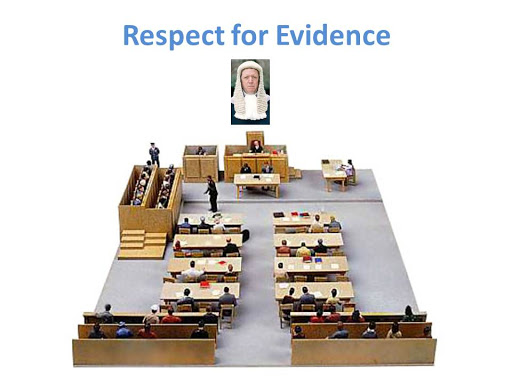29th March 2018

One of the Core Features of AMBIT is respect for the fact that there is such a thing as evidence, on the basis that to ignore this would be to show great disrespect towards those whose future may depend upon the outcomes of our decisions.
As the phrase suggests, AMBIT strives to orient itself to reality, and to facts that are proven, rather than a particular clinician's opinions or wishes. This is entirely consonant with Mentalizing practice, which promotes a curious inquisitive tentative stance - open to learning and avoiding the assumption of knowledge without evidence (Pretend mode functioning.)
| There are Training Exercises for Respect for Evidence in this manual. |
Evidence can take a variety of forms; different pieces of evidence are different not only in how much respect they command, but also in their applicability to a specific situation at a specific time. This work is an inexact science, but Monitoring OUTCOMES lays out the rationale for integrating the day-to-day therapeutic tasks with regular, robust outcomes measurement. Of course, in the hierarchy of evidence applicable to the developing content of the AMBIT manual, properly conducted trials and systematic reviews are at the top. Outcomes evaluations from teams working in the field constitute a valid and important step towards developing and conducting such trials.
Respect for evidence is applied in AMBIT in three ways:
(a) Manualization
Firstly, the approach takes seriously the need for Manualization. The AMBIT approach is manualized, using highly innovative web-based documentation (see Using the Manual), in recognition of the fact that evidence points to improved outcomes for interventions that are manualized, as opposed to 'reactive' or eclectic approaches (Huey et al, 2000), and where fidelity to the model is high.(b) Evidence-based interventions
Wherever possible we use Working in multiple domains to deliver interventions which are evidence-based, or adaptations of these to fit them for the non-standard settings they are delivered in. The AIM Form embedded in this manual will generate a range of AIM suggested interventions from the scorings you enter into it about a particular young person, and there is advice on how to think about WhichInterventionWhen. It is accepted that in some such settings (home-based, street-level), there is not yet sufficient trial evidence to assert effectiveness, so that the phrase 'evidence-oriented' is rather more fitting at this early stage than the rather over-used 'evidence-based'.As regards the evidence for home-based, multimodal, assertive models of practice, we acknowledge the huge role played by MST (Multisystemic Therapy) in developing a rich literature on this area of work. It is helpful to consider some of the Differences between MST and AMBIT
.